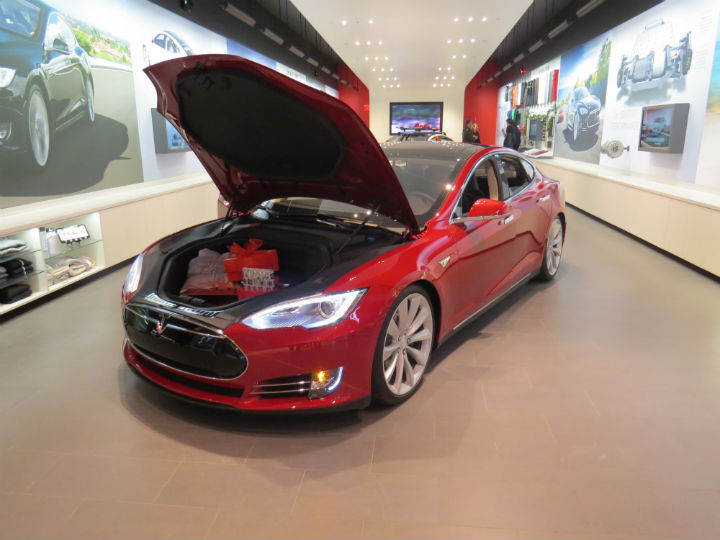On a snowy, seemingly unassuming Tuesday in December, my mind was blown because I had the opportunity to test drive a Tesla Model S. The fully electric wonder-child of billionaire investor Elon Musk (think PayPal) is as gorgeous inside as it is out. From conversations with car / technology enthusiasts, the general scepticism comes from performance around an engine-less car – a car that relies on a few hours at a power station to keep it purring. Regardless of price tag, potential buyers want to know that the next car that they’re going to be investing in is an idea that will be widely adopted, not just be yesterday’s afterthought in a few years.

While I empathize with where they’re coming from, I also love seeing disruption, especially in an industry that desperately needs to be shaken up a bit.
Let’s take a look at the 2014 Tesla Model S after 24 hours of driving it.
First impressions:
For those who love their cars, appearance is everything; it’s almost as important as the drive itself. It’s that idea (among others) that has helped sell Mercedes-Benz, BMW, Audi and Porsche over the years, and it’s the first detail you experience when you walk up to the car. From that moment, key in hand, when the door handles slide out from the door, you know you’re in for something special.
Sitting in the car, aside from being very spacious, one can’t help but be overwhelmed by the massive 17-inch touch screen display (which makes up the entire centre console). Like a mini-computer, it offers full 3G connectivity (embedded Tesla-covered SIM card, roaming in North America is included, for now), Google maps-powered navigation with traffic notifications, web browsing, music streaming (Slacker radio and A2DP), full HD back-up camera, and of course, phone calls.
Getting going, the drive and charging:
Gone are the days of the push-to-start feature; it’s simply too many steps. In the Model S, once pressure is put onto the driver’s seat, and the key is detected, the high-resolution dashboard activates and you immediately are made aware of energy, kilometre range, and other relevant stats. The centre console gives you immediate access to everything you’re looking for control-wise, and is very intuitive to navigate.
The Bluetooth, Internet, sound and navigation integration makes it feel like you have a personal assistant sitting in the passenger seat. That, combined with rear wheel drive (which I was pleasantly surprised how well it handled in the snow), ensure you’re secure and confident on the road.
- Roll Up To Win? Tim Hortons says $55K boat win email was ‘human error’
- Bird flu risk to humans an ‘enormous concern,’ WHO says. Here’s what to know
- Halifax homeless encampment hits double capacity, officials mull next step
- Ontario premier calls cost of gas ‘absolutely disgusting,’ raises price-gouging concerns
As for the biggest question, the battery power: the top-tier (the model I was outfitted with) 85-kWh lithium-ion battery pack advertises a range of 482 KMS, but the lighter, less-expensive 40-kWh and 60-kWh packs respectively, will come later, offering claimed ranges of up to 257 KMS and 386 kilometres, respectively. The Model S comes standard with an onboard 10-kW charger, while a 20-kW unit can be purchased initially or retrofitted for $1,600. It will cut recharge time on the mega 85-kWh pack from eight hours to about four, depending on the amp and voltage ratings of the outlet being used.
Overall:
If this is an example of what cars are going to be like in the future, I am thoroughly excited at what the future holds. Despite the price tag and charging limitations in Toronto, the Tesla proves that there is life after petrol, and more importantly, that technology, if implemented right, can make driving an interactive experience.
Although I only had a short time with the Model S, I am left wanting more, and that’s exactly what Tesla is looking for. The Tesla Model S starts at $69,900 USD. / $77,800 CAN.
Learn more about Telsa’s cars here
Do you own a Model S? Do you plan on buying one? Sound off below!



















Comments